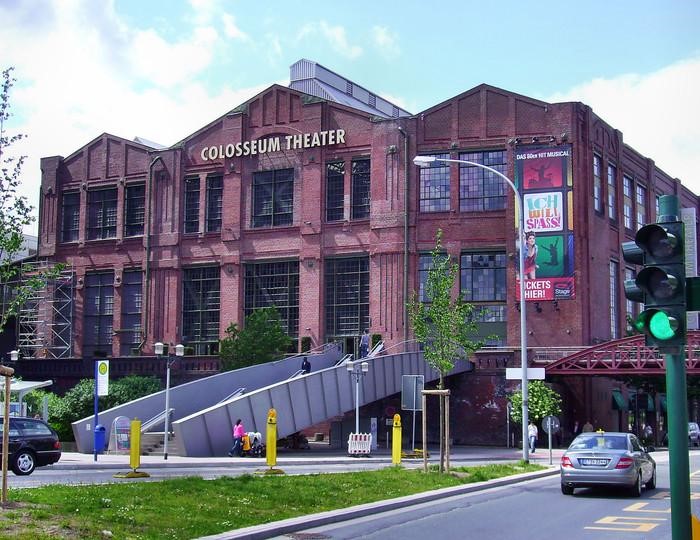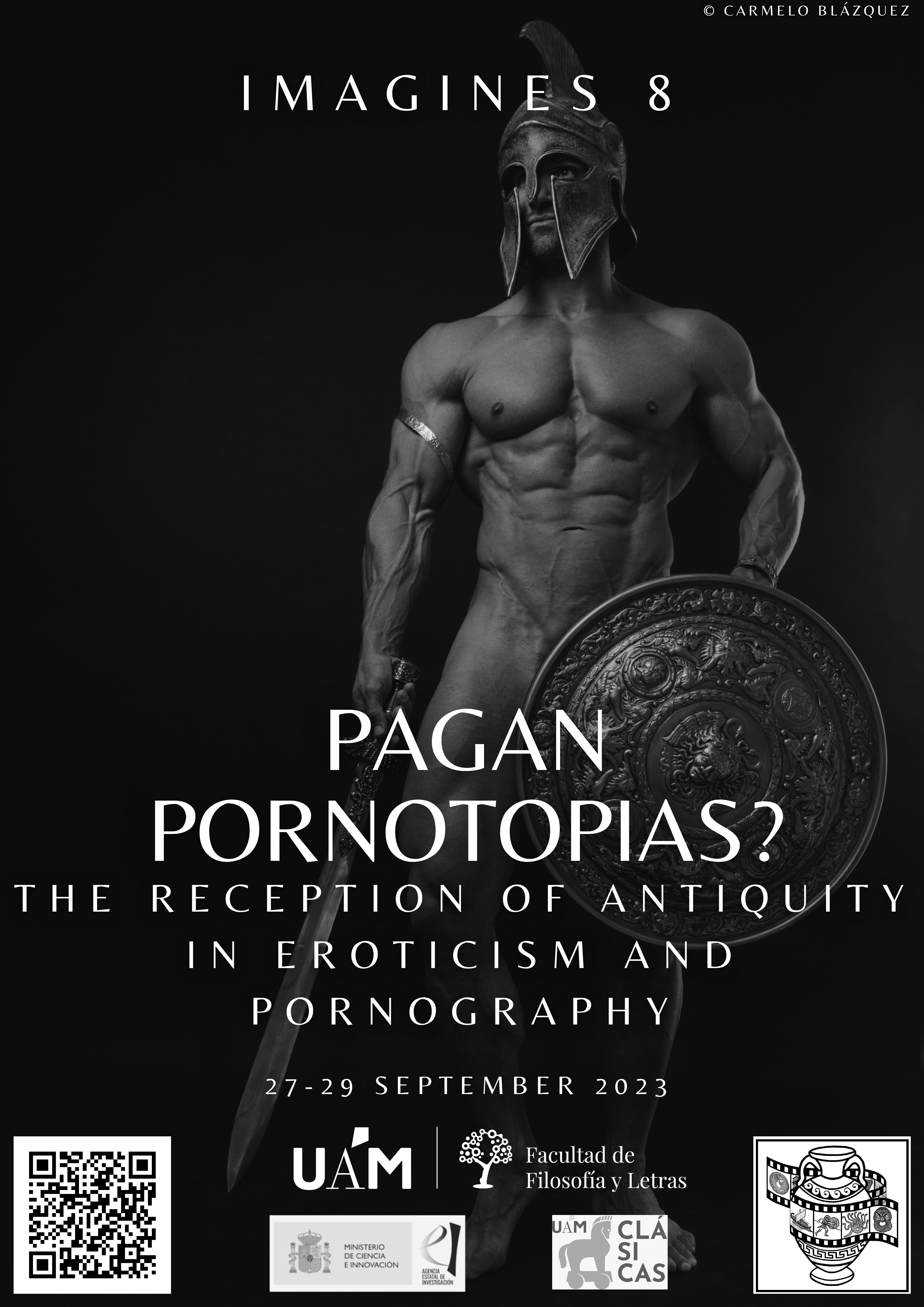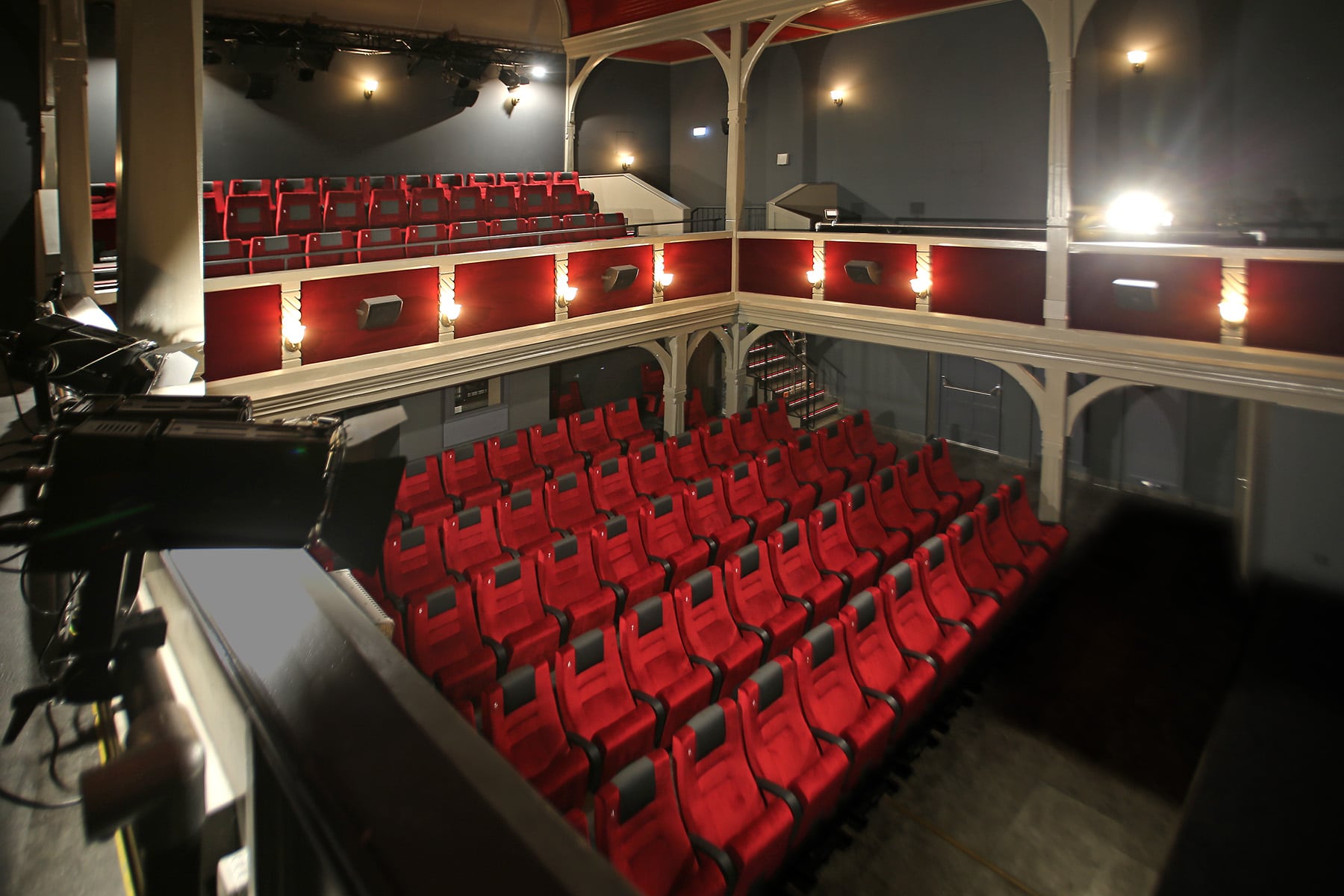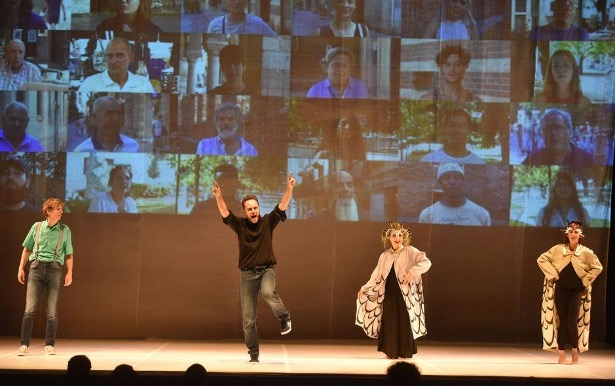Colloque international IMAGINES/ International Conference IMAGINES
18-20 Octobre 2018, Toulouse
(roll down for the French version)
The Fragrant and the Foul: the Smells and Senses of Antiquity in the Modern Imagination
The classical tradition has long confined Antiquity to an immaculate, sanitized whiteness : thus idealised, it was deprived of its multi-sensorial dimension, and conveniently limited to the visual paradigm. Olfaction, in particular, has often been overlooked in classical reception studies due to its evanescent nature which makes this sense difficult to apprehend. And yet, the smells associated with a given figure, or social group convey a rich imagery which conotes specific values : perfumes, scents and foul odours both reflect and mould the ways a society thinks or acts. The aim of this conference will be to analyse the underexplored role of smell – both fair or foul – in relation to the other senses, in the modern rejection, reappraisal or idealisation of Antiquity. We will pay particular attention to the visual and performative arts especially when they engage a sensorial response from the reader or the viewer.
We therefore invite contributions focusing not only on painting, literature, drama, and cinema but also on advertising, video games, television series, comic books and graphic novels, as well as on historical re-enactments which have recently helped reshape the perception and experience of the antique for a broader
audience.
Conference papers (in English or French) will be twenty minutes in length. Topics may include, but are not limited to:
– The materiality of smell: what are the substances, plants and/or objects associated with antique smells in the modern imagination? To what extent may we confront current archeological data concerning the fragrant objects used in Antiquity with representations of smell in modern works? What new technical means are now mobilized to make modern audiences ‘smell’ and sense Antiquity (for instance in museums and multi-media productions)? We also invite papers that address the role flowers play in the modern construction of the antique smellscape and how this connects with the other senses.
– The sensoriality of antique rituals: How do fragrances (incense, burnt offerings, perfumed oils) shape modern representations of antique ritualistic and magical practices? To what extent does the staging of ritualistic gestures and objects associated with smell (and notably the burning of incense) create a form of estrangement between past and present, and deepen the rift between polytheistic and monotheistic faiths?
– The erotics of smell and scent: How was the antique body (both male and female) made desirable thanks to the use of perfume and cosmetics? How was this in turn exploited in painting, films, advertisement etc. – especially in connection with Orientalism? What role does smell play in gendered constructions of the antique body? What relation can we establish between the fragrant and the (homo)erotic? We also welcome discussions of
modern representations of antique baths, hygiene and ‘sane’ classical bodies in relation to
scent.
– Foul smells and diseased bodies: to what extent did the hygienistic shift which affected Western societies in the modern age (as described by A. Corbin) influence the perception of the antique smellscape? When did Goethe’s conception of the classical as ‘sane’ start being challenged? More generally, how are antique illnesses and decaying bodies depicted in the modern imagination and for example performed on stage or in historical reenactments
aiming to recreate ‘authentically’ the experience of antique battles? Does smell have a specific social/national identity? Since Antiquity, whose bodies have been most recurrently perceived as pestilent: those of enemies, foreigners, lower social classes (artisans, peasants, slaves…)?
Proposals (300 words) and short biographies should be sent to Adeline Grand-Clément (This email address is being protected from spambots. You need JavaScript enabled to view it.) and Charlotte Ribeyrol (This email address is being protected from spambots. You need JavaScript enabled to view it.) no later than 15th December 2017.
The contributions must be original works not previously published. The abstract should clearly state the argument of the paper, in keeping with the topic of the conference.
A selection of contributions (in English) will be considered for a volume publication by Bloomsbury in the series ‘Imagines – Classical Receptions in the Visual and Performing Arts’.
***
Le miasme et l’oliban. L’odeur et les sens dans la réception de l’Antiquité
Colloque international IMAGINES/ International Conference IMAGINES
18-20 Octobre 2018, Toulouse
L’Antiquité classique a longtemps été considérée comme étant « aseptisée », d’une blancheur immaculée : l’idéalisation dont elle a fait l’objet l’a dépouillée de sa dimension sensorielle, au profit du seul paradigme visuel. Le domaine olfactif, en particulier, a peu retenu l’intérêt des études sur la réception de l’Antiquité, en raison de son caractère évanescent et difficile à saisir. Pourtant, les odeurs que l’on prête à tel personnage ou à tel groupe social véhiculent tout un imaginaire riche et porteur de valeurs spécifiques : parfums et pestilences contribuent à façonner les façons de penser et d’agir d’une société. L’objectif du colloque sera d’explorer le rôle de l’olfaction, en relation avec les autres registres sensoriels, dans les processus de réception de l’Antiquité à l’époque moderne – que ces derniers se manifestent sous la forme d’un rejet, d’une réappropriation ou d’une idéalisation. Nous nous intéresserons de manière plus spécifique aux arts visuels et performatifs, lorsqu’ils cherchent à engager l’expérience sensorielle du lecteur ou du spectateur. Seront ainsi concernés non seulement peinture, littérature, théâtre, cinéma, mais également la publicité, les jeux vidéos, les séries, les comics et romans graphiques ainsi que les reconstitutions historiques à grande échelle qui ont renouvelé l’imaginaire lié à l’Antiquité en
touchant un plus large public.
Les communications (en français ou en anglais) seront d’une durée de 20 min et pourront porter sur l’une des quatre thématiques suivantes :
– La matérialité de l’odeur: quels sont les objets, végétaux et substances odorant(e)s qui caractérisent les sociétés antiques dans l’imaginaire qui s’est développé autour de l’Antiquité? Peut-on confronter les résultats des analyses archéométriques actuelles, qui nous renseignent sur la nature des produits odorants manipulés par les Anciens, aux
representations que l’on trouve dans les oeuvres modernes? Quels efforts aujourd’hui pour donner à “sentir” l’Antiquité et quels moyens techniques mobilise-t-on (en particulier dans les musées, les productions multimedias…)? On pourra accorder une attention particulière aux fleurs, qui contribuaient à la mise en place de cet imaginaire odorant, permettant également de faire le lien avec les autres registres sensoriels.
– La sensorialité des rituels: dans quelle mesure la mise en scène d’effluves odorantes (encens, fumée du sacrifice, huiles parfumées, …) sert-elle à suggérer les pratiques rituelles – ou magiques – des Anciens? Quels types de dispositifs imagine-t-on? La mise en scène, à travers les gestes, les produits manipulés et les effets recherchés, participe-t-elle à créer un sentiment d’altérité chez les Modernes et à creuser une distance entre religions
polythéistes et monothéismes?
– La puissance érotique des senteurs et parfums: par quels moyens olfactifs (parfums, produits cosmétiques) les corps masculins et féminins étaient-ils rendus désirables et attractifs? Comment cet imaginaire fut-il exploité en peinture, au théâtre, dans les films, dans les publicités, etc. – notamment en rapport avec la vogue de l’orientalisme? Il s’agira aussi, à travers cette thématique, d’interroger le processus de construction du genre et la relation entre odeurs, sexualité et (homo)érotisme. On inclura également les réflexions autour de l’imaginaire lié aux bains, aux thermes et à la propreté des corps sains (sans perdre de vue l’angle olfactif).
– Les mauvaises odeurs et les corps malades: dans quelle mesure le tournant hygiéniste qui a affecté les sociétés occidentales au cours de l’époque moderne (cf. A. Corbin) a-t-il influencé la vision du paysage olfactif antique ? A partir de quand la conception goethéenne du classique comme ‘sain’ a-t-elle cessé de prévaloir? Et plus généralement, comment les Modernes se sont-ils représentés la maladie et les mauvaises odeurs des Anciens? Comment ce désir de traduire l’expérience sensorielle antique de manière plus ‘authentique’ s’exprime-t-il par exemple dans le cadre de performances théâtrales ou de reconstitutions historiques (‘re-enacment’) de batailles célèbres de l’Antiquité? Les communications pourront aussi envisager la dimension identitaire de l’olfaction: à quels
corps associe-t-on, depuis l’Antiquité, les pestilences? Ceux des ennemis, des étrangers, voire ceux des classes sociales les plus basses – artisans, paysans, manoeuvres, esclaves…?
Les propositions de communication (300 mots) accompagnées d’une courtebiographie sont à envoyer à Adeline Grand-Clément (This email address is being protected from spambots. You need JavaScript enabled to view it.) et à Charlotte Ribeyrol (This email address is being protected from spambots. You need JavaScript enabled to view it.) avant le 15 décembre 2017. Il devra s’agir de recherches originales n’ayant pas déjà fait l’objet d’une publication. Le résumé fera apparaître clairement la thèse centrale de l’auteur, en relation avec la thématique du colloque.
Les communications pourront faire l’objet, après avis favorable du comité scientifique, d’une publication (en anglais) dans un volume édité chez Bloomsbury dans la collection ‘Imagines – Classical Receptions in the Visual and Performing Arts’.
The Fragrant and the Foul: The Smells and Senses of Antiquity in the Modern Imagination
Le miasme et l’oliban: L’odeur et les sens dans la réception de l’Antiquité
18-20 October 2018, Université Jean Jaurès, Toulouse
Programme
Link to website
 Thursday, October 18, 2018
Thursday, October 18, 2018
13:30 – 14:00: Welcome and registration
14:00 – 14:30: Introduction – Adeline Grand-Clément & Charlotte Ribeyrol
14:30 – 15:45: KEYNOTE 1: Mark Bradley – Chair: Adeline Grand-Clément
14:30 – 15:30: ‘Roman aromas: dirt, depravity and the power of odour in the city of Rome, from ancient to modern’ – Mark Bradley (Nottingham University)
15:30 – 15:45: Discussion
15:45 – 18:15: SESSION 1. Gendered smells and bodies – Chair: Filippo Carlà-Uhink (Heidelberg)
15:45 – 16:15: ‘Let “no unpleasant smell offend the nostrils”: the role of the body in the rhetoric of Erasmus of Rotterdam’ – Elaine Sartorelli (Sao Paulo). Link to abstract
16:15 – 16:45: ‘Vaginal Fumigation for the Goop Generation: Scent Therapy in Antiquity and the Holistic Health Movement’ – Margaret Day (Ohio State). Link to abstract
16:45 – 17:00: Coffee break
17:00 – 17:30: ‘“DADA does not smell like anything”: performing and painted bodies from Ovid to Dada.’ – Ainize González García (Barcelona) & Nicole Haitzinger (Salzburg).
17:30 – 18:00: ‘L’odeur du marbre : Chaleur et sensualité des corps antiquisants au XXIe siècle’ – Fabien Bièvre-Perrin (Centre Camille Jullian, Aix-Marseille Université) & Tiphaine Annabelle Besnard (Université de Pau et des Pays de l’Adour). Link to abstract
18:00 – 18:15: Discussion
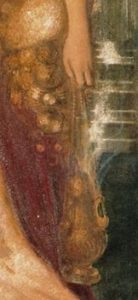 Friday, October 19, 2018
Friday, October 19, 2018
09:30 – 10:45: KEYNOTE 2: Catherine Maxwell – Chair: Charlotte Ribeyrol
09:30 – 10:30: ‘”Unguent from a carven jar”: Odour and Perfume in Arthur Machen’s The Hill of Dreams (1907)’ – Catherine Maxwell (Queen Mary, London)
10:30 – 10:45: Discussion
10:45 – 13:00: SESSION 2. Exotic scents: sensing otherness – TBC
10:45 – 11:15: ‘Sensual Otherness: Ancient Baths in 19th century Art’ – Giacomo Savani (Leicester University)
11:15 – 11:45: Coffee break
11:45 – 12:15: ‘Perfumed antiquity in Victorian paintings’ – Christina Bradstreet (National Gallery London)
12:15 – 12:45: ‘Breathing in “the strange Egyptian smell”: Contamination and the Erotics of the Dead Body’ – Nolwenn Corriou (Paris I)
12:45 – 13:00: Discussion
13:00 – 14:30: Buffet lunch
14:30 – 16:15: SESSION 3. What smell is the sacred ? The sensoriality of antique rituals – TBC
14:30 – 15:00: ‘Representations of fragrance in Pompeian domestic cult’ – Johannes Eber (LMU München)
15:00 – 15:30: ‘Marie-Madeleine, la sainte (au) parfum’ – Jean-Pierre Albert (EHESS Toulouse). Link to abstract
15:30 – 16:00: ‘Sacrifier des parfums pour Isis: la reconstitution sensorielle de rituels isiaques dans la littérature et la peinture au XIXe siècle’ – Anna Guédon (Toulouse). Link to abstract
16:00 – 16:15: Discussion
16:15: Coffee break
18:30: Visit of the Musée Saint-Raymond
20:00: Conference dinner (to be confirmed)
09:00 – 12:00: SESSION 4. Recreating the Fragrance of the Past – Chair : Martin Lindner (Göttingen)
09:00 – 09:30: ‘“Balsama et crocum per gradus theatri fluere iussit” (Vita Hadr. 19,5). The Smells and Senses in the Roman Theatre and their Contemporary Reception.’ – Raffaella Viccei (Milan)
09:30 – 10:00: ‘Wake up and smell the Roman food’ – Kim Beerden (Leiden)
10:00 – 10:30: ‘La persistance d’un parfum antique: la Rose de Paestum’ – Giulia Corrente (Università degli Studi Roma Tre). Link to abstract
10:30 – 11:00: Coffee break
11:00 – 11:30: ‘Archiving smells: a review of real and imagined collections of odours, and a proposal for smell preservation’ – Cecilia Bembibre (UCL)
11:30 – 12:00: TBC – Denise Reitzenstein (LMU München)
12:00 – 12:30: Closing discussion
12:30 – 13:30: Lunch buffet
13:30: Sensory workshop (Les Fées Bottées)
15:00: Imagines Meeting (for members of the executive board only)
****



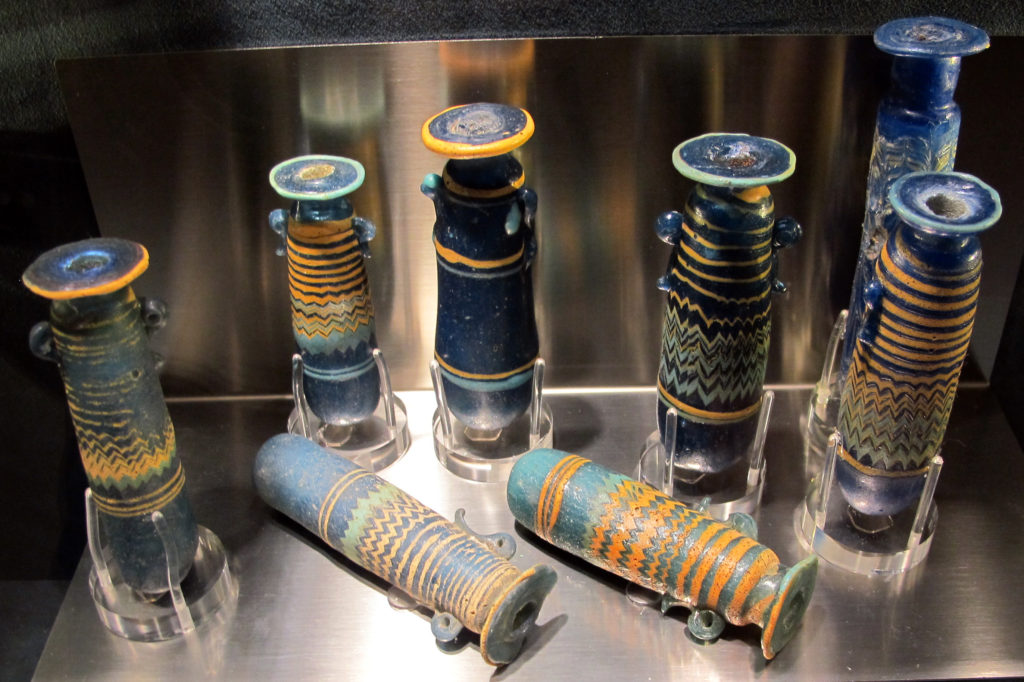 /images/2018/12/Manifattura_fenicia_o_rodia_unguentari_in_paste_vitree_450-250_ac._ca._09-300x200.jpg 300w,
/images/2018/12/Manifattura_fenicia_o_rodia_unguentari_in_paste_vitree_450-250_ac._ca._09-300x200.jpg 300w,  /images/2018/12/villa-farnesina.-detail-189x300.jpg 189w" alt="" width="221" height="352" class="wp-image-3608" style="box-sizing: border-box; margin: 0px; padding: 5px; border: 1px solid rgb(238, 238, 238); font-weight: normal; font-style: normal; font-size: 18px; line-height: 1; font-family: inherit; text-align: left; max-width: 100%; height: auto; border-radius: inherit;" decoding="async" loading="lazy" />
/images/2018/12/villa-farnesina.-detail-189x300.jpg 189w" alt="" width="221" height="352" class="wp-image-3608" style="box-sizing: border-box; margin: 0px; padding: 5px; border: 1px solid rgb(238, 238, 238); font-weight: normal; font-style: normal; font-size: 18px; line-height: 1; font-family: inherit; text-align: left; max-width: 100%; height: auto; border-radius: inherit;" decoding="async" loading="lazy" />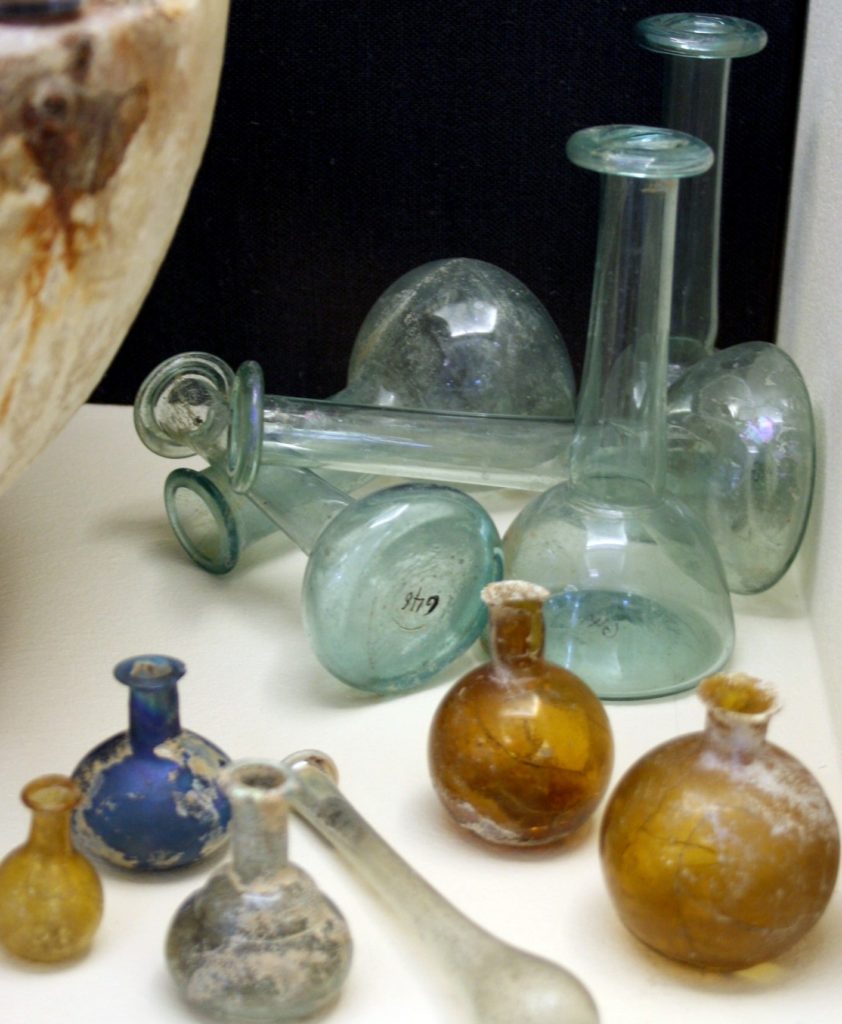 /images/2018/12/Unguentaria-from-the-kerameikos.-detail-247x300.jpg 247w,
/images/2018/12/Unguentaria-from-the-kerameikos.-detail-247x300.jpg 247w, 




